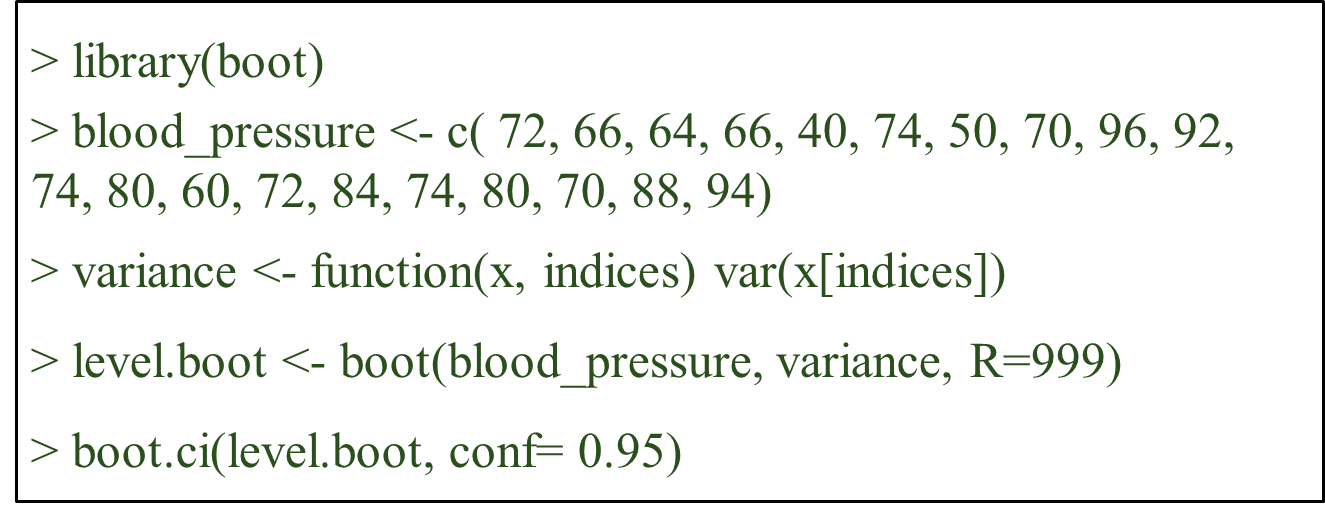[1] 59.001 38.267 41.025 35.555 46.690 20.994 39.407 52.780 57.495 52.416
[11] 60.062 48.149 40.182 50.929 49.472 49.197 43.459 40.493 60.196 58.590
[21] 53.645 53.837 61.134 62.115 46.517 41.404 56.500 53.281 44.821 47.610
[31] 51.178 58.315 34.411 47.795 41.828 60.767 60.797 51.421 51.570 48.313
[41] 47.310 58.078 38.753 35.692 50.604 42.070 53.403 47.405 36.952 53.682DSC 3091- Advanced Statistics Applications I
Point Estimation and Confidence Intervals
Dr Jagath Senarathne
Department of Statistics and Computer Science
Point Estimation
Recall
Parameter: Characteristics that are used to describe the population.
Statistic: a function of the observable random variables in a sample which does not include any unknown quantities.
Estimator: A statistic that is used to estimate an unknown parameter.
Point Estimation Cont…
| Parameter | Estimator |
|---|---|
| Population mean \(\mu\) | Sample mean \(\bar{x}\) |
| Population variance \(\sigma^2\) | Sample variance \(s^2\) |
| Population proportion \(p\) | Sample proportion \(\hat{p}\) |
Maximum Likelihood Estimators
The point in the parameter space that maximizes the likelihood function.
Likelihood function is given by; \[𝐿(𝑥,\theta)=\prod_{𝑖=1}^𝑛𝑓(𝑥_i,\theta)\]
The idea of maximum likelihood estimation is to first assume our data come from a known family of distributions that contain parameters.
Then the maximum likelihood estimates (MLEs) of the parameters will be the parameter values that are most likely to have generated our data.
Example 1
- Consider a simple coin-flipping example. Let’s say we flipped a coin 200 times and observed 103 heads and 97 tails. If the probability of “success” (i.e. getting a head) is \(p\),
Define a function that will calculate the likelihood function for a given value of \(p\); then
Search for the value of \(p\) that results in the highest likelihood.
Example 2
Suppose we have data points representing the weight (in kg) of students in a class.
This dataset appears to follow a normal distribution. Find the MLEs for the mean and standard deviation for this distribution?
Normal distribution - Maximum Likelihood Estimation
- The MLE of \(\mu\) is defined as \(\hat{\mu}_{MLE}=argmax(x_1,...,x_n|\mu,\sigma^2)\); where \(\hat{\mu}_{MLE}\) is the value of \(\mu\) that maximizes the likelihood function.

If we maximise the above likelihood function, we get \(\hat{\mu}_{MLE}=\bar{x}.\)
Since the MLE of \(\mu\) is the sample mean, computing the MLE in R becomes straightforward.
Interval Estimation
Point estimators are often use as sample measures for population parameters.
It is also helpful to know how reliable this estimate is, that is, how much sampling uncertainty is associated with it.
A useful way to express this uncertainty is to calculate an interval estimate or confidence interval for the population parameter
In other words, the confidence interval is of the form “point estimate ± uncertainty”
Confidence Interval for Mean
Case 1: When data is normal/ large sample and \(\sigma\) is known.
\[\bar{x}\pm z_{\alpha/2}\sigma/\sqrt{n}\]
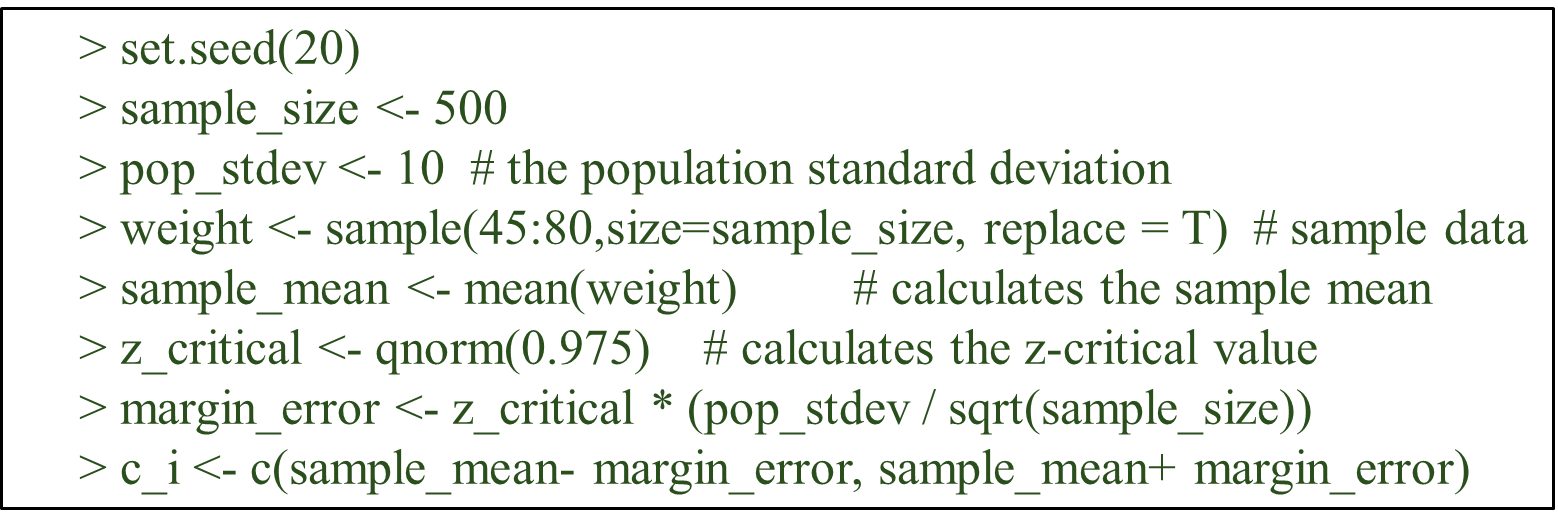
Case 2: When data is normal/ large samples and \(\sigma\) is unknown.
\[\bar{x}\pm t_{n-1,\alpha/2}\sigma/\sqrt{n}\]

Case 3: When data is non-normal/ small samples
- For this, bootstrap approach is used as follows.
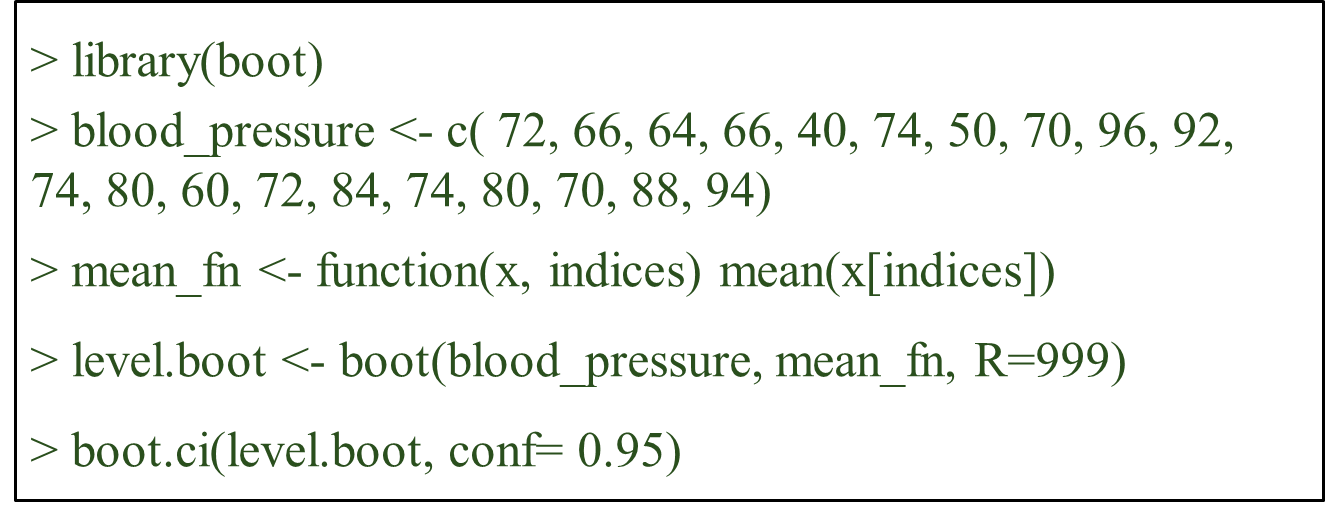
CONFIDENCE INTERVALS FOR Difference of Means
Case 1: Sampling from two independent normal distributions with known variances.


library("BSDA")
z.test(x,y = NULL,alternative = "two.sided",
sigma.x = NULL, sigma.y = NULL, conf.level = 0.95)Case 2: Sampling from two independent normal distributions with unknown variances (small samples).
- when population variances are equal

t.test(x,y,alternative = "two.sided",
var.equal=TRUE, conf.level = 0.95)- when population variances are unequal


t.test(x,y,alternative = "two.sided",
var.equal=FALSE, conf.level = 0.95)Confidence Interval Chart in R (Independent Means & CIs)

- Example
set.seed(123456) # Create example data
data <- data.frame(x = c("A","B","C"),
y = round(runif(3, 10, 20),2),
lower = round(runif(3, 0, 10),2),
upper = round(runif(3, 20, 30),2))
library(ggplot2)
ggplot(data, aes(x, y)) + # ggplot2 plot with confidence intervals
geom_point() +
geom_errorbar(aes(ymin = lower, ymax = upper))
Confidence Intervals for Proportion
- Case 1: For large sample (Using Normal approximation)
\[ \hat{p}\pm Z_{\alpha/2}\sqrt{\frac{\hat{p}(1-\hat{p})}{n}}\]
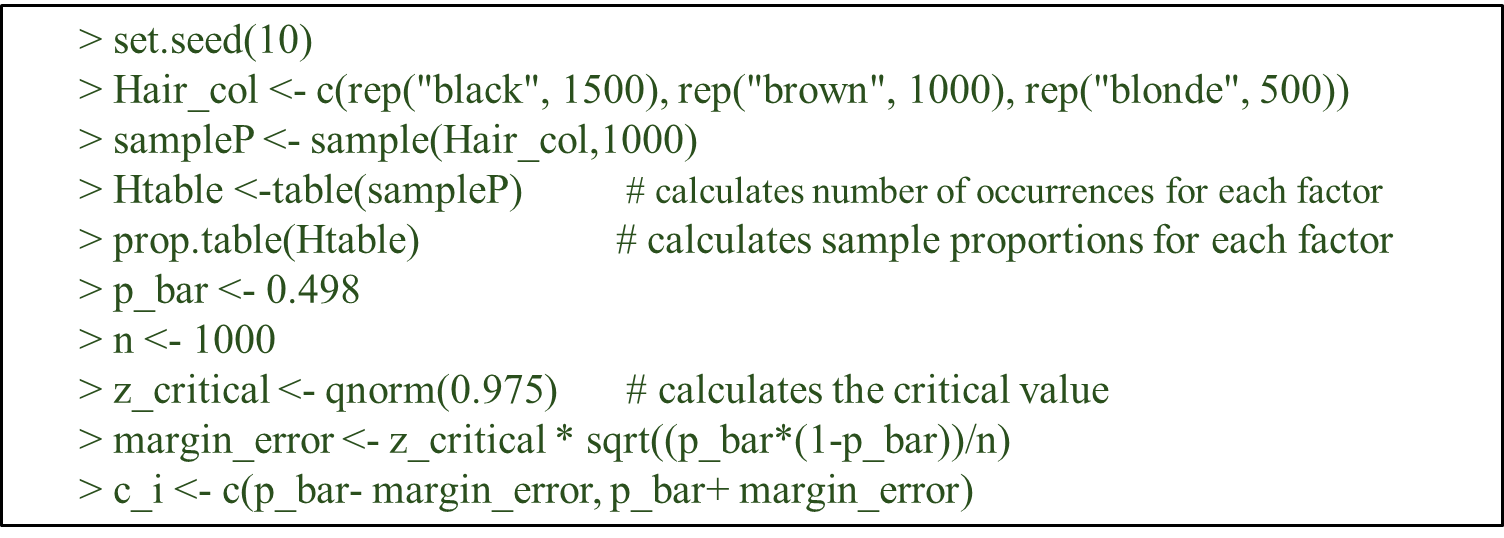
Case 1: For large sample (Using Binomial Distribution)
- we can use the following functions from R package epitools for this case.
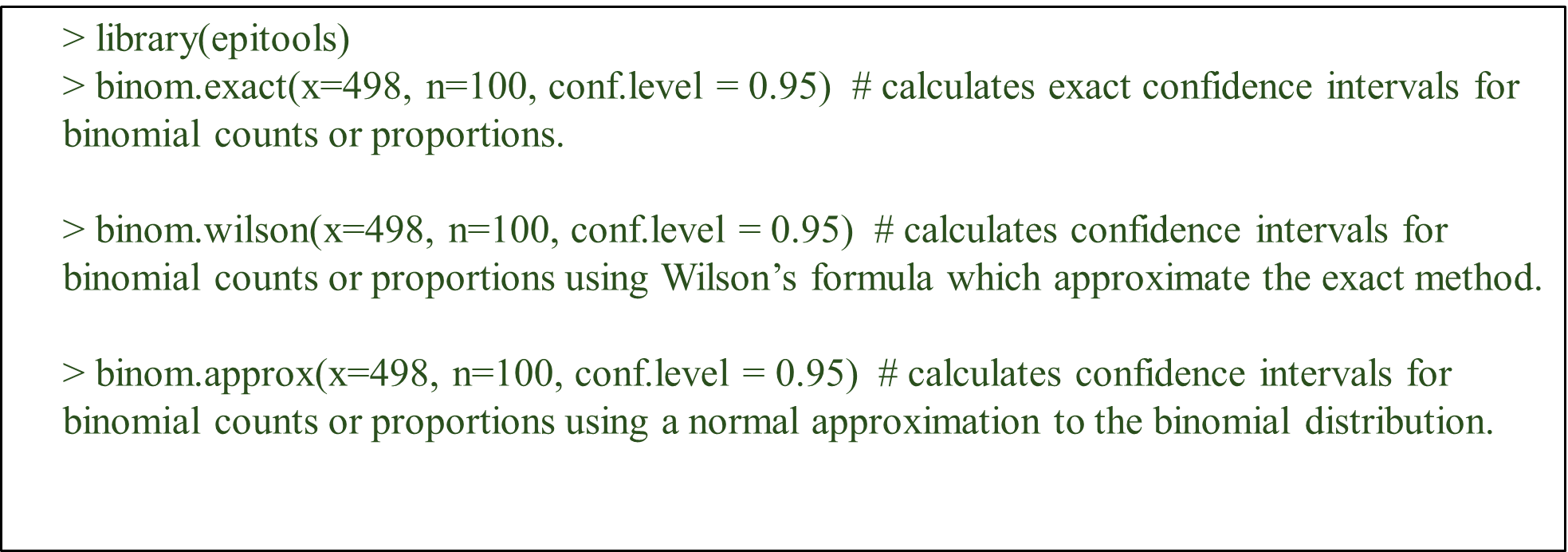
Case 2: For small sample (Using Binomial Distribution)
- When sample size is small, confidence interval for population can be calculated using binom.test() function.

Confidence Intervals for Variance
Case 1: Under normality assumption
- User defined function to obtain confidence interval for variance.
var.interval = function(data, conf.level = 0.95) {
df = length(data) - 1
chilower = qchisq((1 - conf.level)/2, df)
chiupper = qchisq((1 - conf.level)/2, df, lower.tail = FALSE)
v = var(data)
c(df * v/chiupper, df * v/chilower)
}
lizard = c(6.2, 6.6, 7.1, 7.4, 7.6, 7.9, 8, 8.3, 8.4, 8.5, 8.6, 8.8, 8.8, 9.1, 9.2, 9.4, 9.4, 9.7, 9.9, 10.2, 10.4, 10.8, 11.3, 11.9)
var.interval(lizard)Case 2: Under non-normality assumption
- When no assumption is made about data, a bootstrap method is used to obtain confidence intervals for the population variance.
